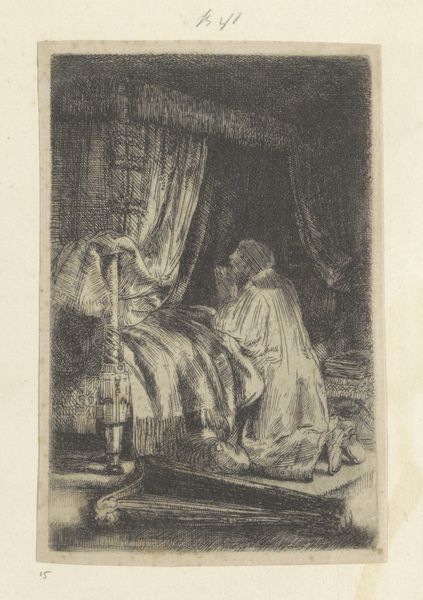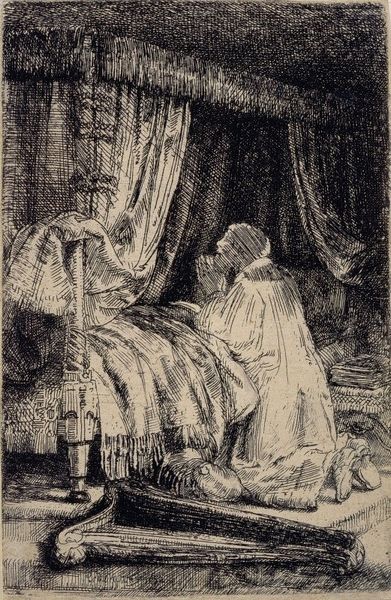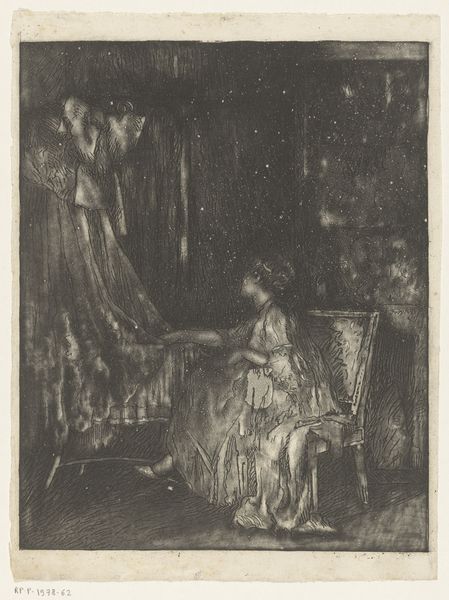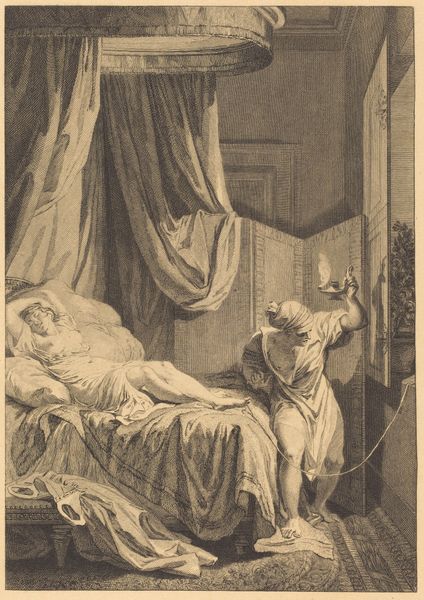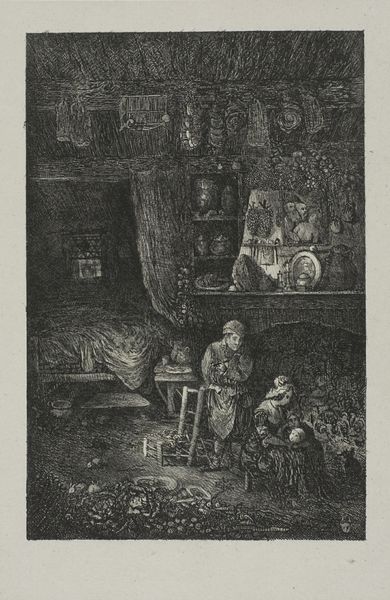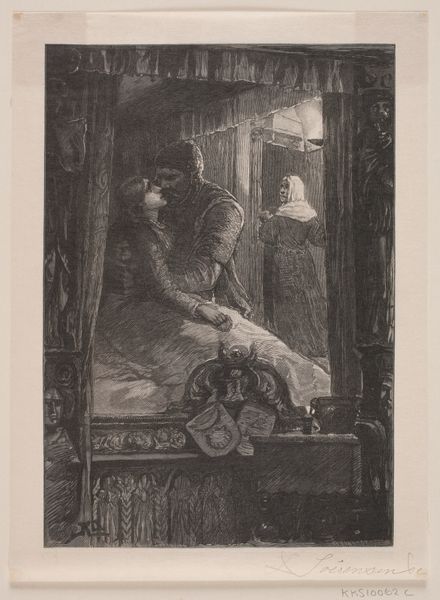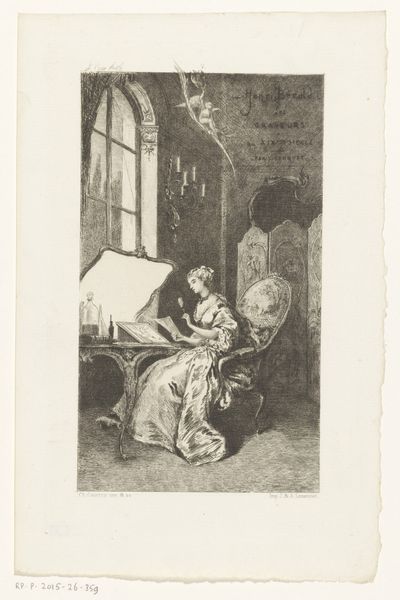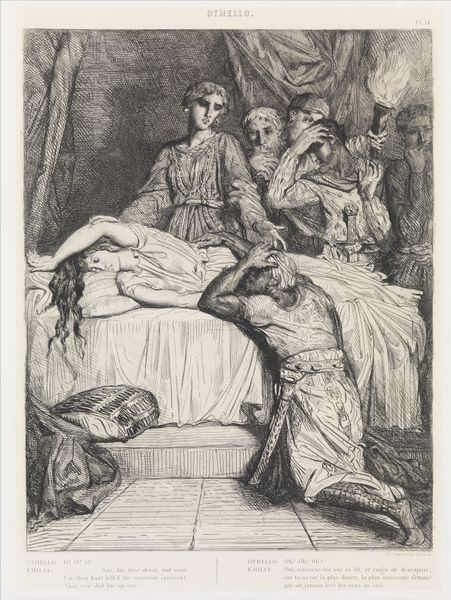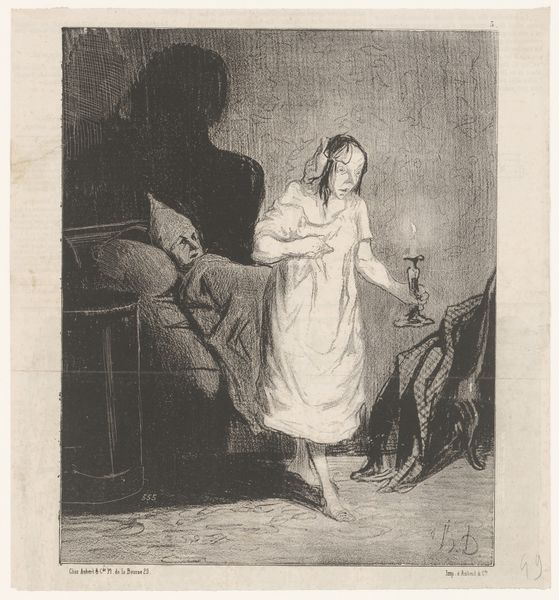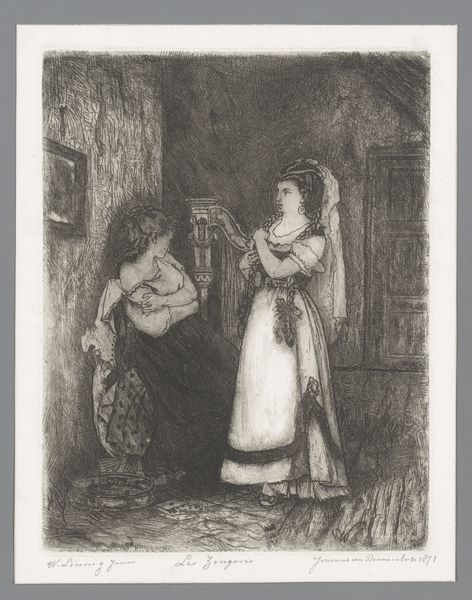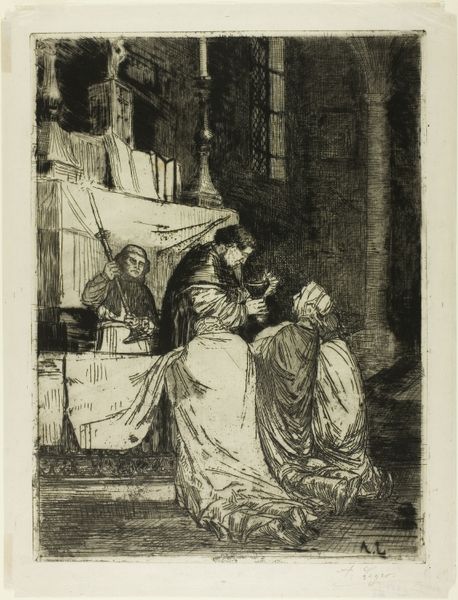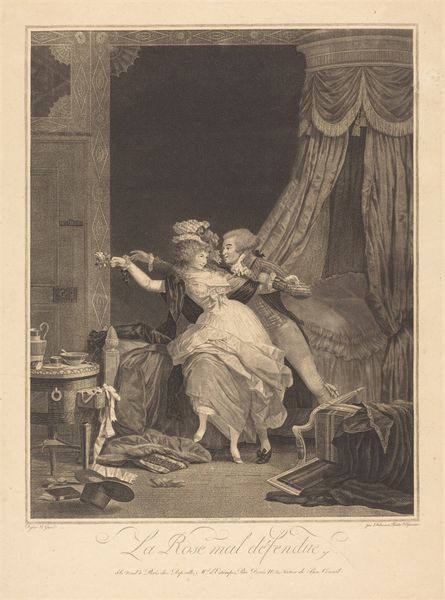
etching
#
portrait
#
baroque
#
etching
#
figuration
#
line
#
history-painting
Copyright: Public domain
Curator: Here we have Rembrandt van Rijn’s etching, "King David at prayer", created in 1652. What are your initial thoughts? Editor: A somber mood hangs over it, doesn't it? The stark contrasts and densely packed lines generate an atmosphere of introspection or even despair. The figure seems swallowed by shadow. Curator: Indeed. Rembrandt's etching technique is fascinating here. Notice how he manipulates the density and direction of the lines to model form and create areas of light and darkness. He exploits the material properties of the copper plate to give his composition form and depth. This specific print also exemplifies his understanding of labor through his precise application of pressure onto the plate, which resulted in a multitude of varying tones. Editor: The diagonal hatching particularly is striking and it creates depth! It directs your eye around the composition. Note too, how little he relies on traditional shading to define David. His outline is suggested as much as described, but also is so carefully and brilliantly defined through a kind of visual shorthand. Curator: Absolutely, it's the contrast, the almost frenetic etching which highlights the details of texture in fabric and the smooth bald head of David. But I think understanding the historical context adds layers. Etchings such as these became more commercial than many of Rembrandt’s painted works and had wider distribution that his painted works – hence how prints were consumed at the time by patrons and print collectors alike. Editor: I concede that understanding how labor impacted consumption back then sheds more light on our interpretations now. I remain focused on the raw power of visual communication as is obvious here, and appreciate his talent on display as the Baroque stylistic qualities that guide the composition are what define the emotional impact, wouldn't you agree? Curator: Both certainly enhance each other to present this work that manages to bridge commercial needs, artistic intention, technique and narrative—all to reveal not only historical processes, but timeless human experience. Editor: Well articulated. It is rather impressive how it evokes those universal feelings with the sheer complexity of its interwoven marks on copper.
Comments
No comments
Be the first to comment and join the conversation on the ultimate creative platform.
